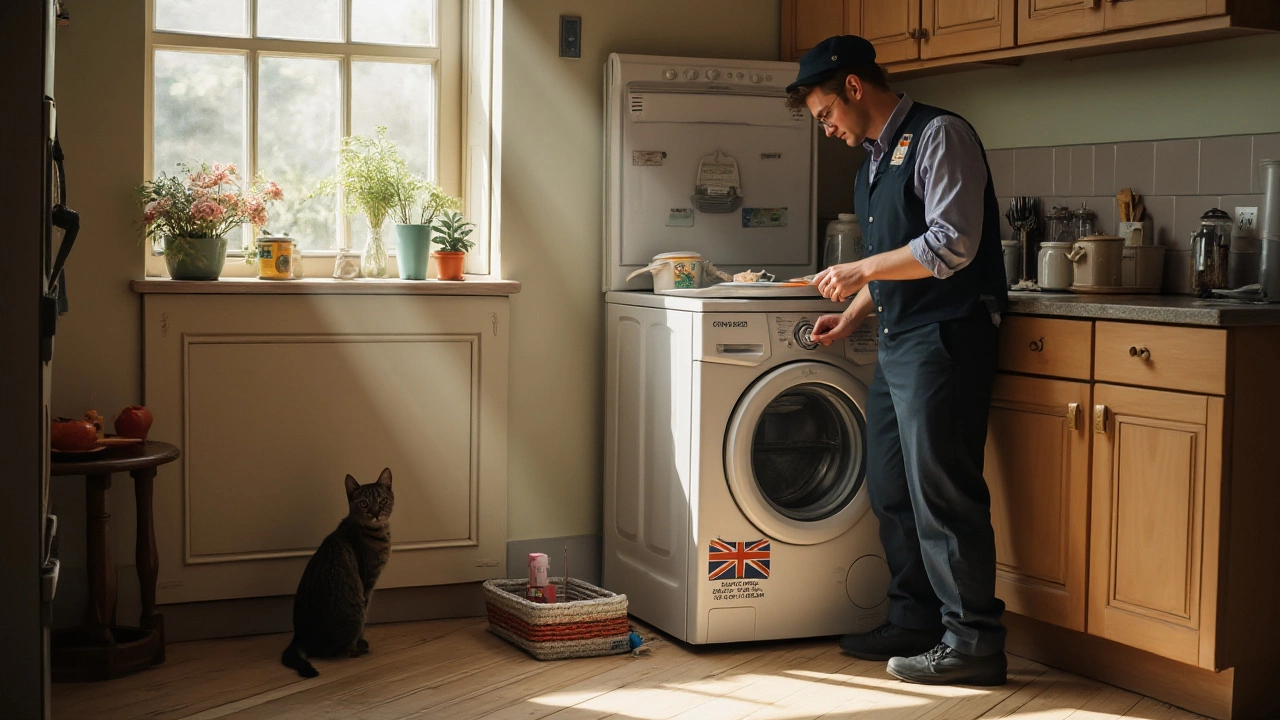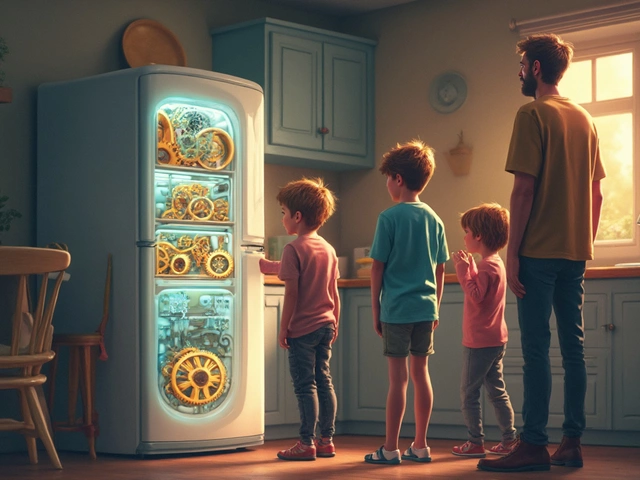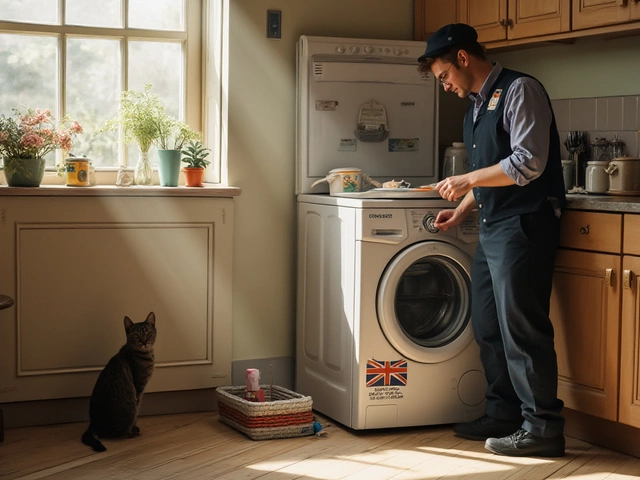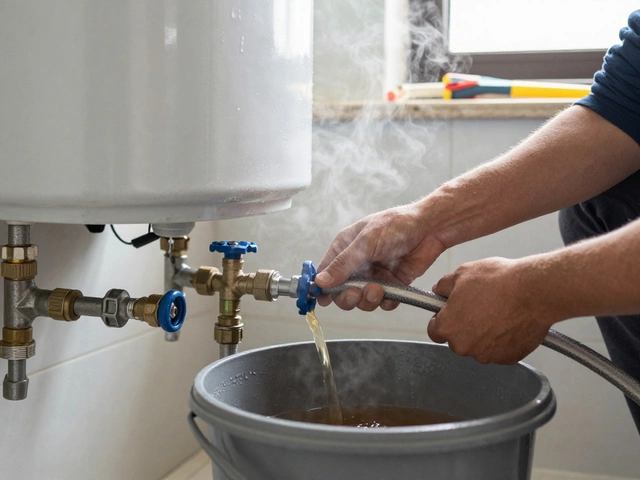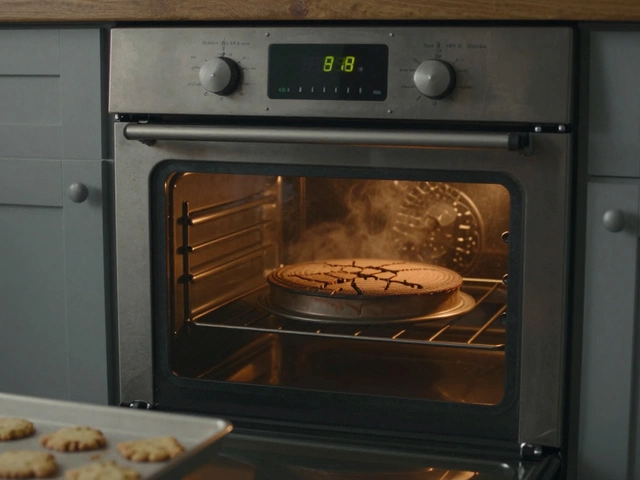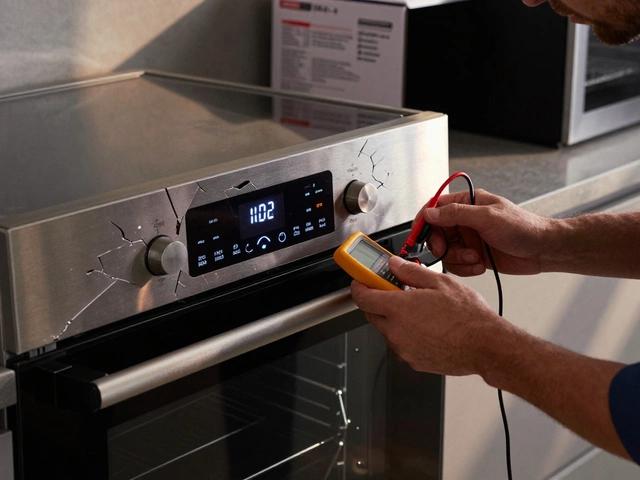Tumble dryers are a staple in many households, bringing the luxury of warm, fluffy laundry with minimal effort. But just like any appliance, a tumble dryer’s lifespan can vary greatly depending on several factors. Understanding what affects its longevity and knowing how to care for it can save you both time and money.
In this guide, we'll delve into the hidden workings of tumble dryers, common problems that might crop up over time, and share practical tips to extend their life. Whether you're a first-time owner or a seasoned laundry enthusiast, there's always something to learn about keeping your appliance in top shape. Let's unravel the secrets to maximizing the lifespan of your trusty tumble dryer and ensure it serves you well for years to come.
- Factors Affecting Tumble Dryer Life Expectancy
- Common Issues and Solutions
- Maintenance Practices for Longevity
- Signs It's Time to Replace Your Dryer
- Choosing a Durable Tumble Dryer
Factors Affecting Tumble Dryer Life Expectancy
Understanding the life expectancy of your tumble dryer isn't just about peeking into a crystal ball. A tumble dryer's longevity is rooted in its day-to-day use, quality of material and manufacturing, and how tenderly it gets treated by its owners. Aiming for a symphony of these factors can help you inch closer to a golden age of hassle-free drying, and it certainly starts with using the right settings. A mismatch between what your dryer is doing and what your clothes actually need can lead to quicker wear and tear not only on the garments but also on the machine itself. Depending on the brand and model, as typical dryers age, their efficiency might decline noticeably — a clear sign that something’s not right.
When usage frequency is high, it's crucial to keep an eagle eye on the machine's lint filters, which play a pivotal role in driving the hot air through the drum. When blocked, not only does efficiency take a nosedive, but safety risks skyrocket. Electricity running at full throttle with no escape for the vast quantities of lint results in dire consequences, leading to potentially shortened appliance life. Remember, it's also significant to get a grasp of regional power settings as they can affect your appliance's health indirectly. Altitude and climate can also dictate how your dryer operates, causing stress that can somewhat reduce its lifespan.
Another component that can alter a dryer’s lifespan is the heating element, which can sometimes fail over years of rigorous work. Paying attention to unusual smells or ineffective drying cycles can be a red flag you don’t want to ignore. In some cases, ineffective drying isn't always due to the machine itself. Husky fur from beloved pets like Bruno can make things worse if left unchecked! It’s advisable to keep sharp eyes on changes in sound, as strange noises could indicate something stuck or broken within the mechanism. Manufacturers these days are more focused than ever on producing eco-friendly but robust machines. The materials used in higher-end models generally stand up better to the ravages of father time.
It’s not just about the physical aspects, but also how you maintain your tumble dryer on a software level. Some modern models have self-diagnostic tools to help owners stay on top of potential issues before they get out of hand. Taking note of error codes without delay and addressing them can save you from costly repairs. A routine, perhaps yearly, check-in with technical specialists could ensure that everything is in tip-top shape, not to mention that it prolongs the life expectancy of your tumble dryer significantly. It's also interesting to see how technology like AI is being incorporated into appliances, anticipating and addressing common user errors.
As the experts at Consumer Reports put it, "A little love and care go a long way in keeping your dryer happy and running efficiently for more years than you might bargain for."
Common Issues and Solutions
Every machine, no matter how well-crafted, will encounter hiccups along the way, and tumble dryers are no exception. Understanding what typically goes wrong and how to fix it can go a long way in preserving the life of your appliance. One of the most frequent concerns with a tumble dryer is the lack of heating. This can often be attributed to a blown thermal fuse, which serves as a safety device to prevent overheating. If your dryer drum is turning, but there's no heat, checking the thermal fuse should be your first step. To replace it, unplug the dryer, locate the fuse on the venting system, and swap it out with a compatible model.
An unsettling vibration or unusually loud noise might indicate worn-out drum support rollers. When these rollers lose their integrity, they can cause the drum to get off-balance, leading to a cacophony reminiscent of a marching band. Identifying the culprit involves removing the drum and inspecting the rollers for wear and tear. If they look well-loved, it’s time to replace them. Regularly checking for lint build-up is crucial as clogged airways can cause overheating and potential fire hazards. Incorporate clearing out lint traps and vents into your routine maintenance to ensure your dryer operates safely and efficiently.
If your dryer isn't spinning, the issue could lie with the belt. A snapped belt will obviously cause the drum to cease its rotation, transforming laundry day into a saga. This repair typically involves opening the dryer cabinet, removing the drum, and replacing the belt to restore full function. For those experiencing longer drying times, the root cause may be a clogged vent. Reduced airflow from lint or debris build-up in the vent hose significantly impacts drying efficiency. A combination of vacuuming and manually clearing out the built-up material often resolves these issues.
"Regular maintenance can't altogether prevent common issues, but it can enhance the longevity and efficiency of your appliance," notes John Matthews, an appliance repair expert with over 20 years of experience. "Spending a little time on care each month can spare homeowners much larger repair bills down the line."
For those who find themselves repeatedly dealing with excessive lint or poor drying performance, it might be worthwhile to check the vent cap outside. Objects or debris can obstruct vent openings, so ensure nothing is blocking it. Plugged vent caps can stop a tumble dryer from shedding moisture effectively, resulting in consistently damp clothes. Lastly, if everything seems to be functioning, but your dryer still isn't drying as it should, a malfunctioning thermostat could be at fault. The thermostat regulates the temperature, and if it's not performing as it should, clothes may stay damp even after extended cycles. Consulting a professional to handle precise electrical components is often the best course of action in such scenarios.

Maintenance Practices for Longevity
Every tumble dryer owner dreams of their appliance purring along seamlessly for years. But achieving this dream often boils down to regular and attentive care. One key aspect of maintaining a long-lived dryer is making habitual inspections of its core components. Start by checking the dryer’s lint filter before and after each use. This small act can prevent lint buildup, which poses not only a fire hazard but also forces the dryer to work harder, reducing its efficiency. Clean filters ensure optimal airflow, which is crucial for a dryer's performance.
Another essential maintenance task is monitoring the ventilation system. Over time, vent ducts can accumulate lint and debris, drastically affecting the dryer’s efficiency and potentially causing overheating. It’s recommended to thoroughly clean the vent every few months. You can do this using a vent cleaning tool or by hiring a professional. Keeping vents clean not only extends the dryer’s life expectancy but also enhances safety. According to the U.S. Fire Administration, failure to clean vents is the leading cause of dryer-related fires.
Many people overlook the drum and interior, but these areas should receive attention too. Wiping down the drum with a soft cloth dampened with white vinegar can eliminate lingering odors and residues from fabric softeners or dryer sheets. Regular inspections inside the drum can also help spot wear and tear early, allowing for timely repairs. If you notice unusual noises or wobbling, it might be a sign that an internal component needs tuning. Listening and responding to your dryer's sounds can preempt more significant issues down the road.
If you treat your appliances well, they will serve you well. Routine care is akin to tuning a piano; it ensures harmony and performance throughout the instrument's life," advises Claudia Williamson, a renowned home appliance expert.
Beyond these practices, setting your dryer to appropriate cycles for different fabric types can also contribute to its longevity. Using the right heat settings not only reflects mindfulness towards energy but also prevents the machine from overworking. This attention can reduce strain on both fabrics and the dryer, contributing to increased life expectancy. Finally, consider the environment you place your dryer in. Ensure it's in a well-ventilated space and is housed where temperature fluctuations are minimal, as extreme temperatures can affect machine components.
Signs It's Time to Replace Your Dryer
Recognizing when your tumble dryer is ready to retire can save you from unnecessary repairs and energy costs. It's not just about the appliance being noisy or failing to dry clothes as it once did. There are subtle yet telltale signs which might indicate that your dryer is nearing the end of its service life. One significant red flag is when your dryer begins to take longer than usual to dry clothes. This can be a hint that the heating element is deteriorating. Alternatively, a slow drying time might suggest a failing thermostat or moisture sensor, which can make longer cycles necessary. These can be costly to replace and sometimes signal that investing in a new dryer may be more efficient.
Another noticeable indicator is an unusual smell, especially a burning scent every time the dryer runs. This can not only point towards a malfunction but can also pose a fire hazard. Lint build-up is a major concern, and even with regular maintenance, older dryers can sometimes hide lint in hard-to-reach places. According to the U.S. Fire Administration, over 2,900 home fires each year are attributed to clothes dryers, making safety a compelling reason to consider a replacement.
"Listen to your appliances. When they start grumbling and groaning, they're probably telling you something's wrong," advises Jane Doe, a home maintenance expert with over two decades of experience.
Frequent repairs are also a clear sign you might need a new dryer. If your machine requires repeated fixes, the repair costs might accumulate to a point where buying a new one is more economical. Balancing repair costs against the price of a new dryer can be illuminating. Over the lifetime of an average dryer, you'll find that excessive repairs can quickly negate the benefits of holding onto an older model.
Dramatic Increases in Energy Bills
When dryers age, their efficiency often decreases, leading to increased electricity and gas bills. If you notice a sharp rise in your energy costs without a clear reason, your dryer might be to blame. Older models lack the energy-saving features of newer appliances, such as improved heat circulation or moisture-sensing technology. Choosing to replace an outdated unit with a model boasting energy efficiency can reduce your environmental footprint as well as your expenses.
Noisy operation is another aspect to consider. While some noise is normal, excessive rattling, grinding, or buzzing might indicate internal components failing. If left unchecked, these can lead to more serious issues down the line. Ignoring these early warnings means you risk a total breakdown when it’s least convenient. Upgrading to a quieter, more efficient model can be a surprisingly soothing experience, both in terms of sound and reliability. In summary, paying attention to these warning signs can help you decide when it’s time to gracefully retire your trusty dryer in favor of a new, more efficient one.
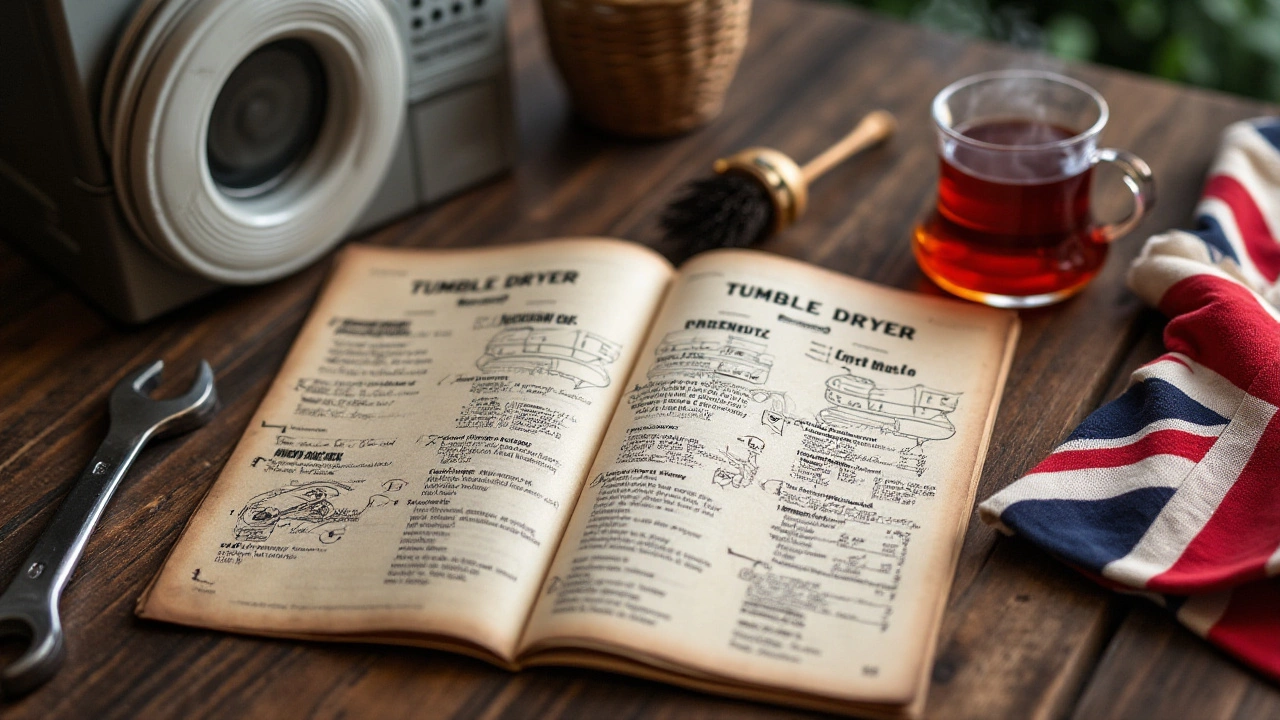
Choosing a Durable Tumble Dryer
When it comes to selecting a tumble dryer that stands the test of time, several considerations can guide you to make a smart purchase. First, knowing the type of dryer that best fits your lifestyle and budget is essential. Typically, users choose between vented, condenser, and heat pump dryers. Vented dryers are often less expensive and use a hose to expel moisture, whereas condenser dryers are slightly more versatile with no need for external venting, ideal for apartments. Heat pump dryers, on the other hand, are the most energy-efficient option, using air to dry clothes without overheating. Though slightly pricier, they could be cost-effective in the long run due to reduced energy consumption.
One of the most crucial aspects of durability lies in the dryer’s construction and brand reliability. Brands like Miele, Bosch, and LG are renowned for creating appliances that typically enjoy longer lives. Consider researching customer reviews and ratings, as they provide invaluable real-life insights into product performance and satisfaction. Don’t just focus on the brand name, though; check for features like stainless steel drums that resist chipping or snagging, contributing to the dryer’s longevity. It's helpful to look for models with extended warranties, evidencing the manufacturer’s confidence in their product's durability.
Efficiency always plays a crucial role in the effectiveness of any home appliance, especially with tumble dryers that are used frequently. Opting for an energy-efficient model with a high Energy Star rating can both prolong the life expectancy of the machine and contribute to lower energy bills. Models with sensor-driven drying cycles that automatically switch off when your clothes are dry can prevent overheating—a common cause of wear and tear. A progressive strategy involves considering smart dryers equipped with technology that integrates with your smartphone, allowing remote monitoring and efficient cycle control.
"The keys to selecting a lasting appliance are research and patience. A dryer is not just a want; it’s a need in today's fast-paced life," says Terry Collins, an expert appliance analyst at TechLiving Magazine.
Additionally, recognizing and understanding specific features that contribute to the machine's durability can yield great rewards. Consider noise levels—quieter machines are often better constructed, with high-quality parts. Another aspect to study is lint filter effectiveness; a highly efficient filter reduces the risk of blockages that can cause overheating and reduce the dryer’s lifespan. You may also encounter dryers with anti-vibration structures that provide stability and further reduce noise during operation. Checking for these specifications can lead you to a dryer that doesn't just fit into your space but aligns with your requirements for something durable and strong.
As a final consideration, let’s highlight affordability balanced with features. While it might be tempting to save money upfront, investing in a sturdy and efficient tumble dryer can result in cost savings over time. This balance requires understanding your exact needs and future-proofing them with the best available technology.

